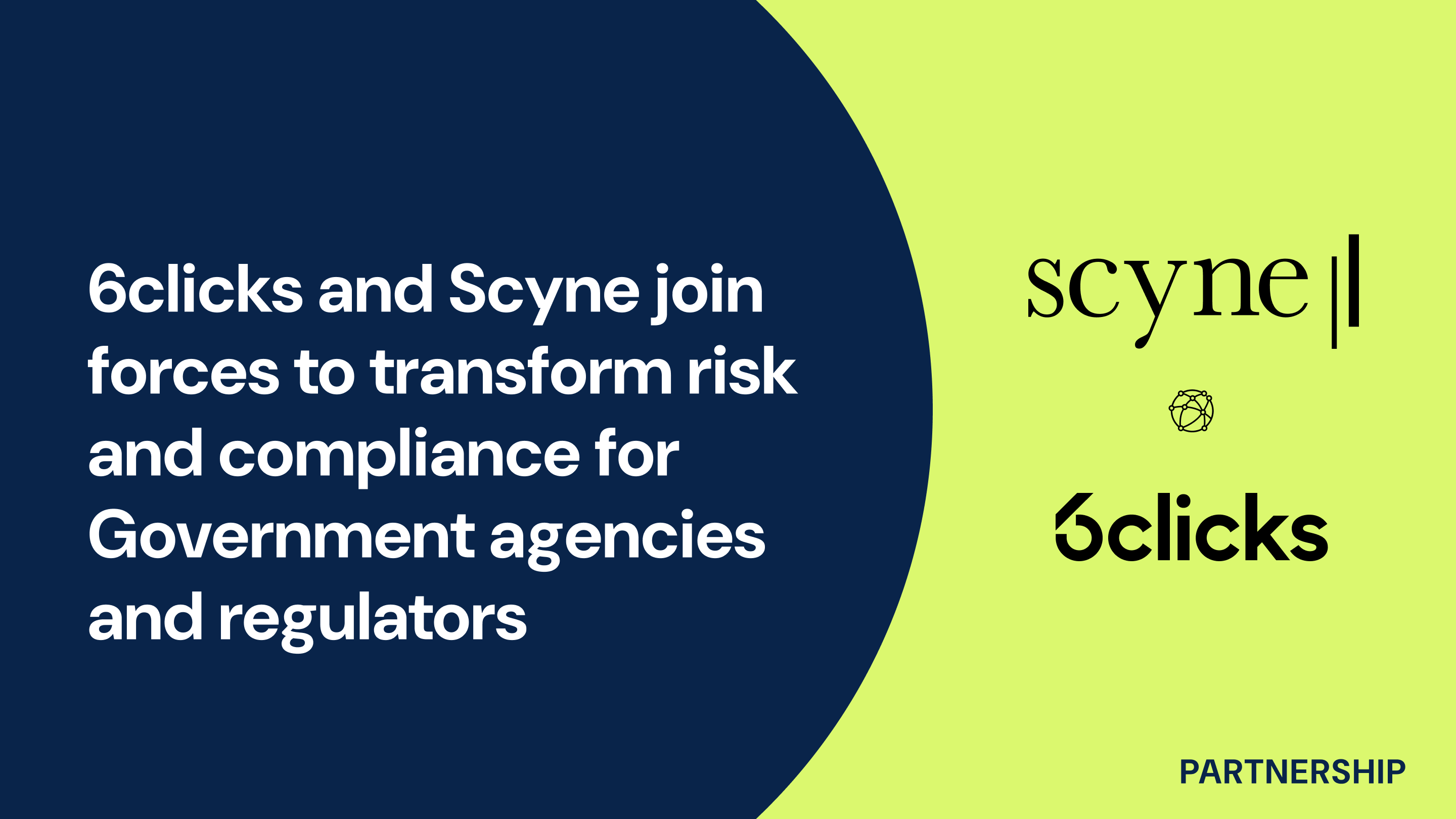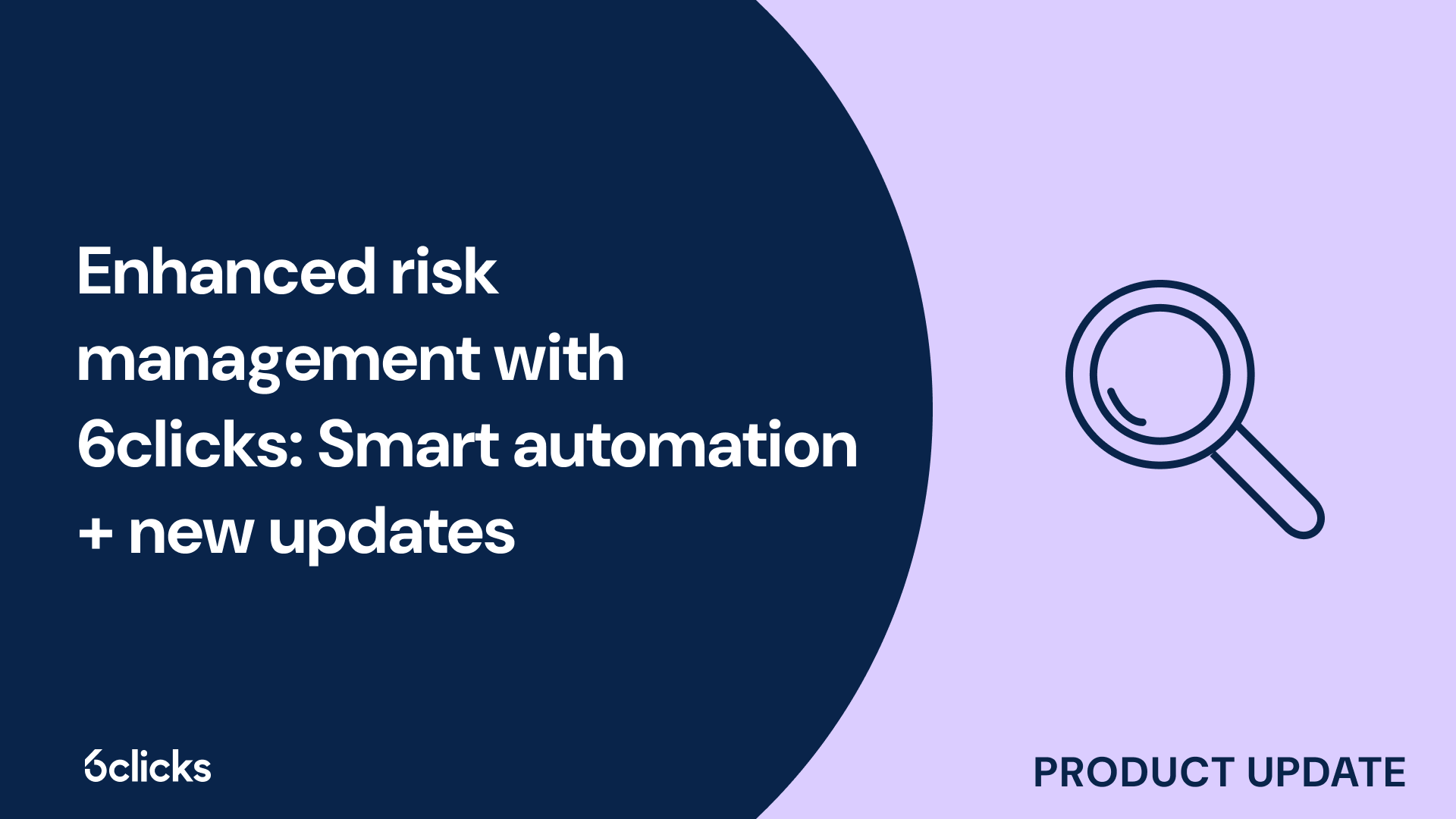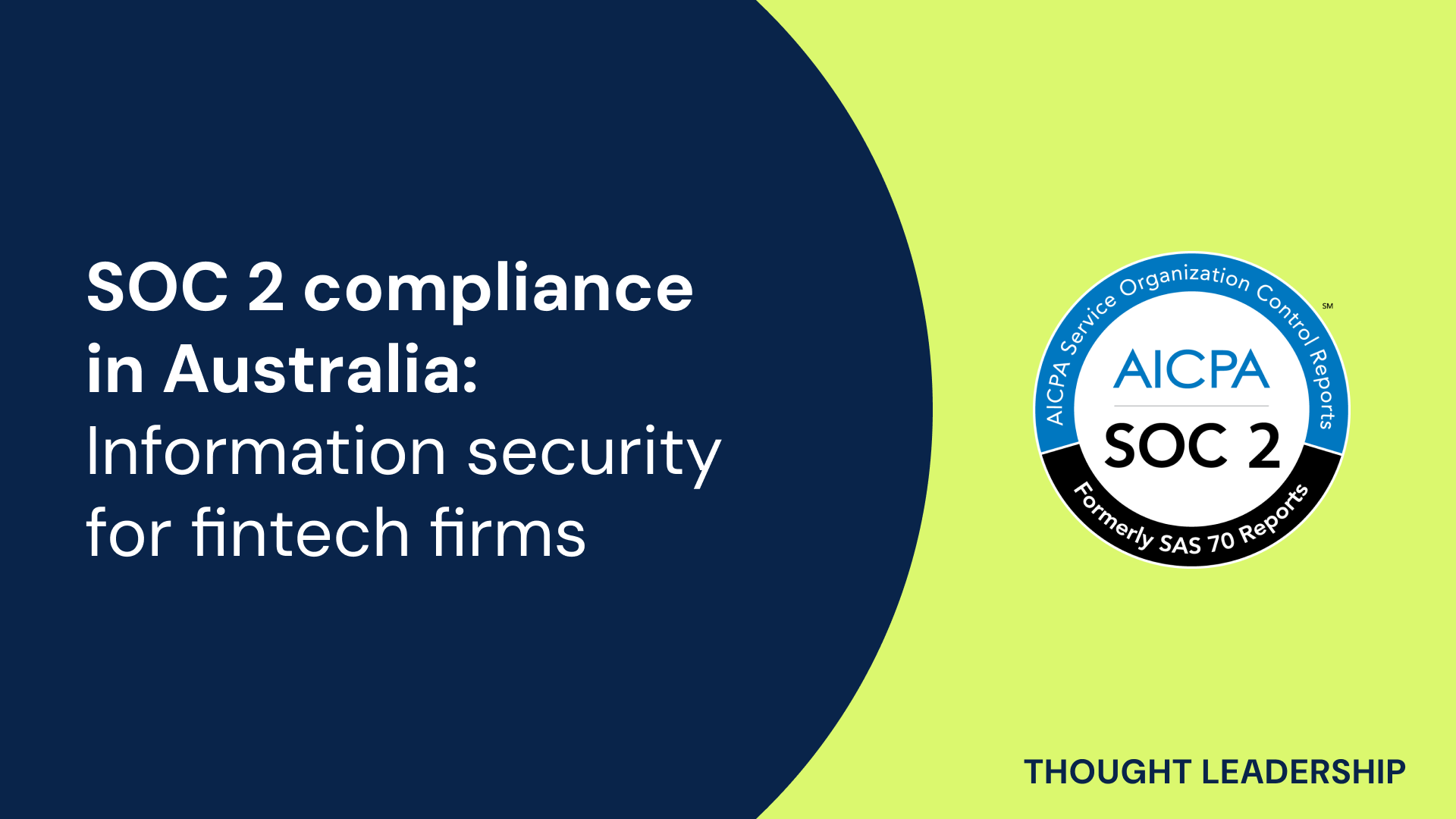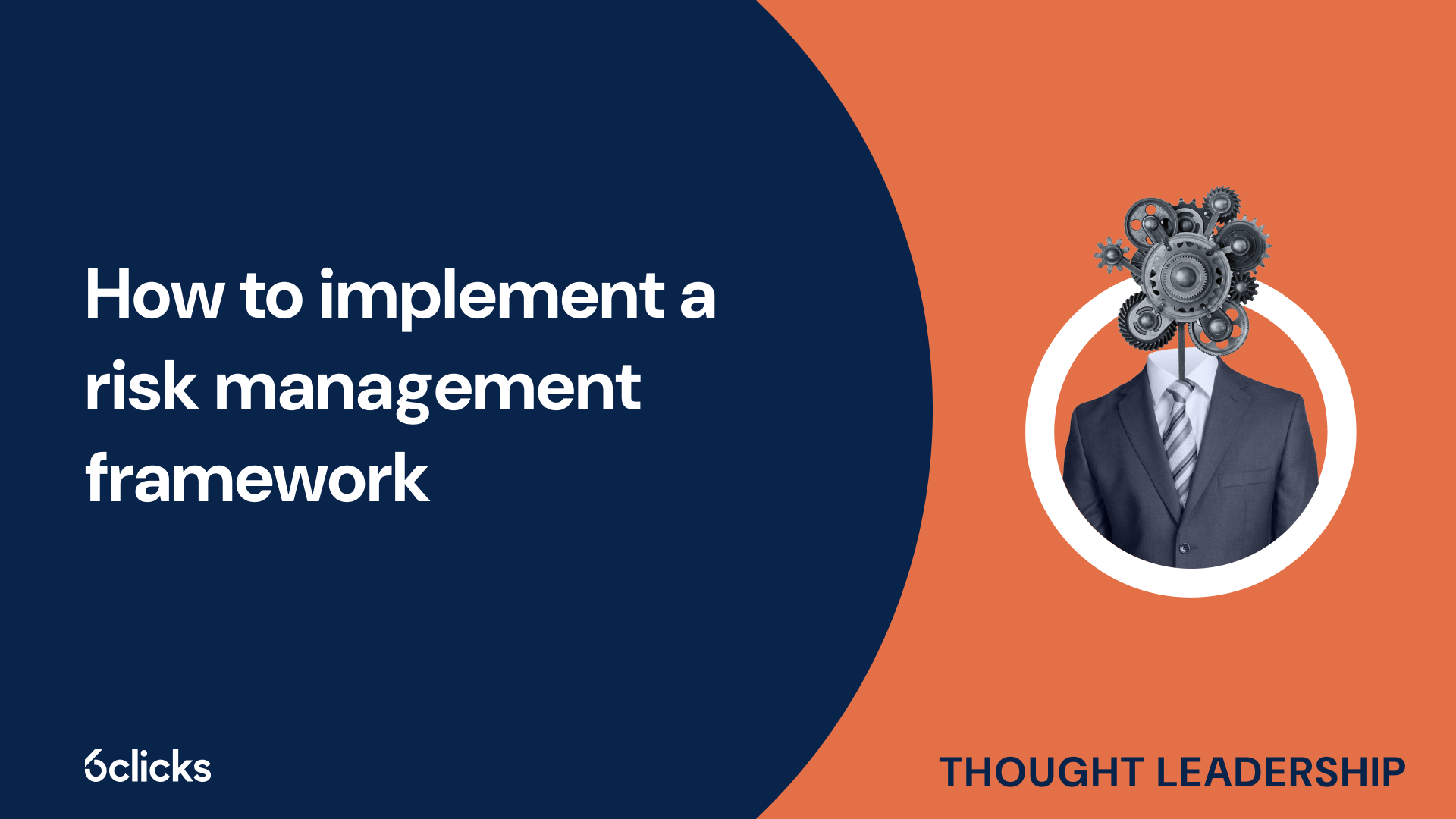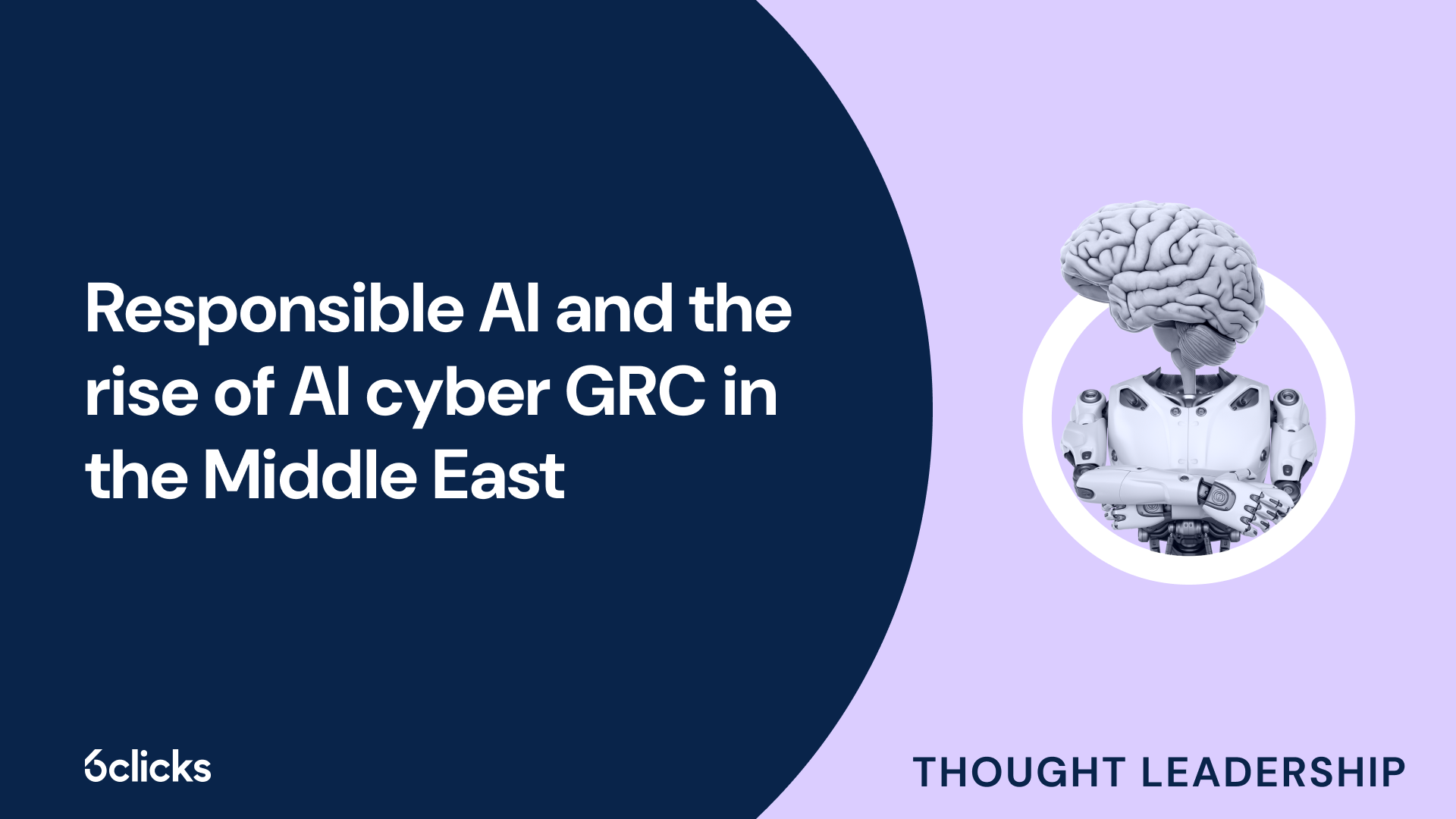The GRC buyer’s guide for 2025: Building resilience with AI-powered, federated solutions
Discover the ultimate GRC buyer's guide for 2025! Uncover how AI-powered, federated solutions transform compliance and security management for industries like government, aerospace, banking, and more. Learn about centralized control, continuous compliance, and advanced cyber GRC capabilities. Download now!
-1.png?width=200&height=249&name=Group%20193%20(1)-1.png)
The GRC buyer’s guide for 2025: Building resilience with AI-powered, federated solutions
What is the NIST CSF?
The main goal of the NIST CSF (Cybersecurity Framework) is to provide organizations with a structured and effective approach to managing and reducing cybersecurity risks. It helps organizations align their cybersecurity posture with their business objectives, risk tolerance, and regulatory requirements. The framework consists of a set of core functions, implementation tiers, and informative references that organizations can use to manage and improve their cybersecurity program. By following the framework, organizations can enhance their understanding of their own cybersecurity risks and have plans in place to detect, respond to, and recover from potential cybersecurity incidents. The NIST CSF is widely recognized and used by government agencies, critical infrastructure sectors, and businesses of all sizes as a guide to assess and strengthen their cybersecurity strategies. It emphasizes the importance of organizational understanding, risk management, access control, and protective technologies to mitigate the impact of cyber threats and ensure the timely recovery of critical systems and data. Ultimately, the NIST CSF aims to enhance the resilience of organizations against cyber threats and promote a proactive approach to cybersecurity risk management.
Overview of key components
The main goal of the NIST CSF (Cybersecurity Framework) is to help organizations effectively manage and reduce cybersecurity risks. This framework provides a structured approach to understand, manage, and mitigate cybersecurity risks to ensure the protection of critical infrastructure sectors, government agencies, and businesses.
The key components of the NIST CSF are organized in its framework core, which consists of functions, categories, subcategories, and informative references that work together to achieve cybersecurity outcomes. The functions represent the high-level activities that are necessary for managing cybersecurity risks. They include Identify, Protect, Detect, Respond, and Recover.
Categories divide the functions into specific areas of focus, such as asset management, access control, and awareness training. Subcategories further break down the categories into actionable tasks and best practices. Informative references, such as industry standards and guidelines, provide additional information and resources to support the implementation of the subcategories.
The NIST CSF's functions align with existing incident management methodologies, making it easier for organizations to integrate the framework into their existing cybersecurity programs. The framework core helps organizations understand their current cybersecurity posture and identify areas for improvement. By implementing the categories, subcategories, and informative references, organizations can develop a comprehensive cybersecurity program that addresses their specific risks, regulatory requirements, and business environment.
Goal of the NIST CSF
The main goal of the NIST CSF is to prioritize cybersecurity and incorporate risk assessments into organizational decisions. By doing so, the framework aims to help organizations understand, manage, and reduce cybersecurity risks effectively.
Implementing the NIST CSF enables organizations to gain a comprehensive understanding of their current cybersecurity posture. Through the framework's functions, categories, and subcategories, organizations can identify potential vulnerabilities and control gaps that expose them to cybersecurity risks. This understanding allows organizations to prioritize cybersecurity and allocate resources accordingly.
Furthermore, the NIST CSF facilitates risk assessments by providing a structured and systematic approach. By implementing the framework's categories and subcategories, organizations can identify, assess, and prioritize their cybersecurity risks. This process helps organizations make informed risk decisions and develop a risk management strategy that aligns with their risk tolerance.
Additionally, the NIST CSF streamlines communication within organizations. The framework provides a common language and set of standards that enable effective communication between different stakeholders, including management, IT, and cybersecurity teams. This unified approach fosters collaboration and ensures that everyone is working toward the same cybersecurity objectives.
Lastly, implementing the NIST CSF can lead to cost savings. By identifying and addressing cybersecurity risks proactively, organizations can prevent potential cybersecurity incidents that could result in significant financial losses. Moreover, the framework encourages organizations to implement cost-effective protective technologies and recovery activities that ensure timely resilience and minimize the impact of cybersecurity events.
Core Functions
The Core Functions of the NIST CSF are a crucial component of the framework, providing organizations with a structured approach to managing and improving their cybersecurity posture. The five Core Functions, which include Identify, Protect, Detect, Respond, and Recover, serve as the foundation for developing an effective cybersecurity program. Each function encompasses specific activities and controls that help organizations gain a comprehensive understanding of their cybersecurity risks, implement protective measures, detect and respond to cybersecurity incidents, and recover and restore systems in the event of an incident. By focusing on these Core Functions, organizations can enhance their organizational understanding, establish a risk management strategy, and optimize their cybersecurity strategies to protect their critical infrastructures and effectively manage potential cybersecurity events.
Identify
In the NIST Cybersecurity Framework (CSF), the Identify function plays a critical role in helping organizations understand their cybersecurity risks and establish a strong cybersecurity posture. This function involves key activities and processes aimed at identifying and managing these risks effectively.
Asset management is a fundamental aspect of the Identify function. It involves inventorying and classifying all digital and physical assets within an organization's infrastructure, including hardware, software, data, and personnel. By understanding their assets, organizations can better protect them and prioritize their efforts to ensure the most critical systems are adequately secured.
The business environment is another crucial component of the Identify function. It involves gaining an understanding of the organization's mission objectives, internal and external stakeholders, and regulatory requirements. This knowledge helps organizations align their cybersecurity strategies with the overall business goals and priorities, ensuring that cybersecurity measures are effectively integrated into the overall business strategy.
Governance is a key aspect of the Identify function as it provides the necessary oversight and accountability for cybersecurity activities. This involves establishing clear roles and responsibilities, defining policies and procedures, and ensuring that resources are allocated appropriately to manage cybersecurity risks.
Risk assessment is a vital activity within the Identify function, as it helps organizations identify and prioritize potential cybersecurity risks. By conducting thorough assessments, organizations can understand their risk tolerance and make informed decisions about allocating resources to address the most critical risks.
Supply chain risk management is also an essential consideration in the Identify function. Organizations must assess the cybersecurity risks associated with their supply chain to ensure the security of their systems and data. This includes evaluating the cybersecurity posture of suppliers and implementing appropriate measures to mitigate supply chain risks.
By effectively implementing asset management, understanding the business environment, establishing strong governance, conducting risk assessments, and managing supply chain risks, organizations can gain a comprehensive view of their cybersecurity risks. This enables them to develop targeted and effective strategies to mitigate these risks and enhance their overall cybersecurity posture. The NIST CSF provides a flexible framework to guide organizations in these activities and achieve a heightened state of cybersecurity readiness.
Protect
The Protect function of the NIST CSF framework focuses on implementing safeguards to ensure the ongoing protection of critical systems and data from unauthorized access, potential cybersecurity incidents, and other threats. This function helps organizations establish and maintain their cybersecurity posture by implementing security controls and incident response plans.
Implementing security controls is a key element of the Protect function. Organizations need to assess their cybersecurity risks and select and implement appropriate controls to mitigate those risks. This involves identifying and implementing technical, administrative, and physical controls to protect their systems and data.
Creating incident response plans is another crucial element of the Protect function. Organizations need to develop plans and procedures to effectively respond to and recover from cybersecurity incidents. These plans outline the steps to be taken during a cybersecurity event, including identifying the incident, containing its impact, eradicating the threat, and conducting recovery activities.
Protecting critical systems and data from unauthorized access is a priority within the Protect function. This involves implementing access controls, such as strong authentication mechanisms, encryption, and secure configurations, to prevent unauthorized individuals or entities from gaining access to sensitive information or systems.
By focusing on these key elements, the Protect function helps organizations establish a robust cybersecurity program that safeguards their critical systems and data from potential cybersecurity threats and ensures a timely response in case of incidents. The NIST CSF provides a comprehensive framework to guide organizations in implementing an effective approach to protect their assets from unauthorized access and potential cybersecurity events.
Detect
The Detect function in the NIST CSF focuses on activities and components that help organizations identify and promptly respond to cybersecurity events. This function plays a critical role in maintaining a strong cybersecurity posture and reducing the impact and potential damage caused by cyber threats.
One key activity within the Detect function is the identification of anomalies and events. This involves implementing systems and processes to detect unusual or suspicious activities that could potentially indicate a cybersecurity incident. By actively monitoring networks, systems, and applications, organizations can identify any deviations from normal behavior and proactively address potential threats.
Continuous monitoring capabilities are another essential component of the Detect function. This involves regularly monitoring and analyzing network and physical activities to ensure that any potential cybersecurity events or breaches are promptly identified. By continuously monitoring their systems and networks, organizations can detect and respond to threats in a timely manner, minimizing the likelihood of a successful attack.
In addition to anomaly detection and continuous monitoring, the Detect function also involves verifying the effectiveness of protective measures. Organizations need to regularly assess and evaluate their cybersecurity controls and measures to ensure they are operating as intended and providing the desired level of protection. This includes conducting penetration testing, vulnerability scans, and other assessments to identify any weaknesses or gaps in their security controls.
Respond
The Respond function in the NIST CSF involves taking timely and appropriate action in response to a cybersecurity incident. It includes several key components and activities aimed at effectively addressing and mitigating the impact of an incident.
Response planning is a critical element of the Respond function. It involves developing and implementing a comprehensive plan that outlines the steps to be taken in the event of a cybersecurity incident. This plan should include procedures for reporting incidents, activating response teams, and coordinating with relevant stakeholders.
Effective communication is crucial during a cybersecurity incident. Organizations should establish clear lines of communication to ensure that relevant parties are promptly informed of the incident. This includes internal communication between different teams and departments, as well as external communication with customers, partners, and regulatory authorities.
Analysis is another important activity within the Respond function. It involves assessing the extent and impact of the incident, as well as identifying the root causes and vulnerabilities that led to its occurrence. This analysis provides valuable insights for developing appropriate mitigation strategies and preventing similar incidents in the future.
Mitigation involves taking immediate action to contain the incident and prevent further damage. This may include isolating affected systems or networks, restoring backups, and implementing patches or updates to address vulnerabilities. It also involves implementing corrective measures to prevent similar incidents from occurring in the future, such as improving security controls and updating policies.
Finally, the Respond function includes continuous improvements based on the lessons learned from the incident. Organizations should conduct post-incident reviews to identify areas for improvement in their response capabilities and overall cybersecurity posture. This feedback loop enables organizations to enhance their incident response capabilities and strengthen their resilience to future incidents.
Recover
The main goal of the Recover function within the NIST CSF is to assist organizations in recovering from a cybersecurity incident and maintaining plans for resilience. This function encompasses several core categories that are crucial in achieving these objectives.
Recovery Planning (RC.RP) involves the development of a comprehensive business continuity and disaster recovery plan. This plan outlines the steps to be taken in the event of a cybersecurity incident, including procedures for restoring systems, recovering data, and resuming normal operations. It is essential to regularly test and update this plan to ensure its effectiveness.
Improvements (RC.IM) focuses on implementing measures to enhance the organization's ability to recover from a cybersecurity incident. This may include implementing improvements identified during post-incident analysis, updating security controls, and enhancing incident response capabilities. By continually improving the recovery process, organizations can minimize the impact of future incidents.
Communications (RC.CO) is critical during the recovery phase of a cybersecurity incident. Effective communication ensures that all relevant stakeholders are promptly informed, allowing for coordinated response efforts. This includes internal communication within the organization, as well as external communication with customers, partners, and regulatory authorities.
Having a robust business continuity and disaster recovery plan in place is essential for organizations to effectively recover from a cybersecurity incident. Regularly testing and updating this plan ensures its readiness and resilience. By prioritizing the Recover function, organizations can minimize downtime, reduce the impact of incidents, and enhance their overall cybersecurity posture.
Framework tiers
The NIST CSF (Cybersecurity Framework) provides a flexible and risk-based approach to managing and reducing cybersecurity risks. It is designed to help organizations identify, assess, and manage these risks in a way that aligns with their business objectives and risk tolerance. The framework consists of five core functions: Identify, Protect, Detect, Respond, and Recover. Each of these functions is further organized into categories and subcategories, which provide a detailed breakdown of the activities and controls necessary to achieve the goals of each function. The framework also includes implementation tiers, which help organizations assess their current cybersecurity posture and determine their target profile. These tiers provide a roadmap for organizations to prioritize and guide their cybersecurity efforts, allowing them to progress from a reactive to a proactive and mature approach to cybersecurity. By implementing the framework and striving to achieve higher tier levels over time, organizations can enhance their overall cybersecurity program and effectively manage cyber threats and incidents.
Tier I: partial/ minimal risk management
Tier I within the NIST CSF refers to a partial or minimal level of risk management. At this tier, there is limited awareness of cybersecurity risk at an organizational level, and the organization lacks a formalized risk management process. Additionally, there is little understanding of the organization's role within the larger cybersecurity ecosystem.
In terms of risk management, Tier I organizations do not have an integrated risk management program in place. This means that they do not have a systematic and structured approach to identify, assess, and respond to cybersecurity risks. Instead, risk management activities may be ad hoc or inconsistent.
Without a formal risk management process, these organizations face challenges in effectively managing cybersecurity risks. They may not have clear visibility into potential threats or the potential impact of a cybersecurity incident on their systems and operations. As a result, their cybersecurity posture is likely to be weak, leaving them more vulnerable to cyber threats.
To improve their risk management practices, Tier I organizations should develop an integrated risk management program that aligns with the NIST CSF. This involves creating awareness of cybersecurity risk throughout the organization, establishing a formal risk management process, and developing a deeper understanding of the organization's role in the larger cybersecurity ecosystem. By adopting this proactive and comprehensive approach, Tier I organizations can enhance their cybersecurity resilience and better protect their information assets.
Tier II: risk informed decision making
Tier II in the NIST CSF focuses on risk informed decision making, which is an important component of an organization's overall cybersecurity posture. This tier builds upon the foundation set in Tier I by implementing a formal risk management process to identify, assess, and respond to cybersecurity risks.
The key characteristic of Tier II is the establishment of an integrated risk management program. This program provides a systematic and structured approach to identify, assess, and respond to cybersecurity risks aligned with the organization's risk tolerance and regulatory requirements. It ensures that risk management activities are consistently applied across the organization, promoting a cohesive and effective approach to cybersecurity.
A crucial aspect of Tier II is external participation. This involves engaging with external stakeholders such as regulators, industry partners, and customers to gain a comprehensive understanding of the business environment and potential cybersecurity risks. By involving external parties, organizations can enhance their awareness of cybersecurity risk and collaborate on strategies to mitigate those risks effectively.
Tier III: risk managed and adaptive system
Tier III in the NIST CSF implementation tiers is characterized by the establishment of a risk managed and adaptive system. Organizations in Tier III have developed a systematic approach to managing cybersecurity risks and adapting their cybersecurity practices based on previous and current cybersecurity activities.
In Tier III, organizations have established risk-informed policies, processes, and procedures to address potential cybersecurity events. These policies are based on a comprehensive understanding of the organization's risk tolerance, regulatory requirements, and business environment. By having risk-informed policies in place, organizations can effectively prioritize and allocate resources to mitigate potential cybersecurity risks.
A key component of Tier III is the integration of risk management practices into the organization's overall business processes. This includes establishing clear roles and responsibilities for managing cybersecurity risks and promoting a culture of cybersecurity awareness throughout the organization. By integrating risk management practices into business processes, organizations can ensure that cybersecurity considerations are taken into account at every level and decision-making process.
The risk managed and adaptive system in Tier III allows organizations to continuously monitor, assess, and adapt their cybersecurity practices based on the evolving threat landscape and changes in the business environment. This approach helps organizations stay ahead of potential cybersecurity events and enables them to respond effectively and efficiently to emerging threats.
Tier IV: organizational commitment to resilience
Tier IV of the NIST CSF is an advanced implementation tier that signifies an organization's strong commitment to resilience in the face of cybersecurity risks. At this tier, senior management plays a crucial role in reviewing lessons learned from previous cybersecurity incidents and determining best practices to prevent and mitigate future threats.
One of the key components of Tier IV is the thorough review conducted by senior management. They assess the organization's cybersecurity program, identify any gaps or weaknesses, and make informed decisions on how to improve the overall cybersecurity posture based on lessons learned. This proactive approach helps to enhance the organization's ability to detect, respond, and recover from potential cybersecurity incidents.
Another important objective of Tier IV is the potential sharing of information with other industries. Organizations at this tier actively participate in information sharing initiatives to collaborate with peers and share knowledge and experiences related to cybersecurity. By sharing this information, organizations can collectively strengthen their defenses and create a more resilient cybersecurity community.
Implementation tiers
The NIST Cybersecurity Framework (CSF) includes four implementation tiers that help organizations assess their maturity level in managing cybersecurity risks. These tiers measure an organization's current cybersecurity profile and provide guidance on how to progress towards a desired target profile.
The first tier, known as Tier 1: Partial, reflects an organization that has an ad hoc and reactive approach to cybersecurity. These organizations have limited awareness of cybersecurity risks and lack formalized processes or policies. They may have some protective technologies in place but lack a comprehensive cybersecurity program.
Tier 2: Risk Informed organizations have made significant progress in identifying and managing cybersecurity risks. They have developed some cybersecurity policies and procedures, although they may not be fully implemented or consistently followed. These organizations have a better understanding of their risk tolerance and have implemented measures to address the most significant risks.
Organizations at Tier 3: Repeatable have documented cybersecurity policies, procedures, and standardized practices. They have a well-defined and consistently implemented cybersecurity program. These organizations regularly review and refine their cybersecurity strategies based on lessons learned from cybersecurity events or incidents.
Tier 4: Adaptive organizations have a robust and mature cybersecurity program that is continuously evolving. They have a comprehensive understanding of their cybersecurity risks, tolerance, and regulatory requirements. These organizations actively monitor and assess their cybersecurity posture, regularly update their risk management strategies, and actively participate in information sharing initiatives.
The implementation tiers assist organizations in assessing their progress in managing cybersecurity risks and planning appropriate activities. By evaluating their maturity level, organizations can determine where they stand in terms of risk management practices and allocate resources accordingly. This assessment allows organizations to align their cybersecurity efforts with budget constraints, regulatory requirements, and desired risk levels. Ultimately, the implementation tiers provide a structured framework for organizations to strengthen their cybersecurity posture and effectively manage cybersecurity risks.



